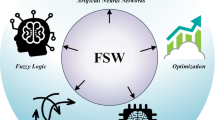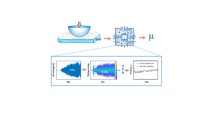Abstract
Machine design is one of the most important tasks in the present scenario. Presently, machine design is done taking into account all the variables and operating conditions. The process is time consuming, error prone, and inefficient design methodology. Due to lack of optimization of the performance of individual components, the performance of the machine as a whole deteriorates. This paper aims at demonstrating the versatility of contract-based design methodology to design machines and overcome some of the drawbacks of the traditional designing process. The process variables involved in such a complex process are best modeled as fuzzy variables as they take non-discrete values. These fuzzy variables are analyzed using contract-based design. An illustration of lathe machine is used to enhance the machining capability by suppressing vibrations using a fuzzy controller and contract-based design. This leads to accurate machining with better tolerances and surface finish.
Similar content being viewed by others
References
Abuthakeer SS, Mohhnaram PV, Mohan Kumar G (2011) Prediction and control of cutting tool vibration in CNC lathe with ANOVA and ANN. Int J Lean Think 2(1):1–23
Adolfsson J, Ng A, Olofsgard P, Moore P, Pu J, Wong C (2002) Design and simulation of component-based manufacturing machine systems. Mechatronics 12(9–10):1239–1258
Badouel E, Benveniste A, Caillaud B, Passerone R (2006) Heterogeneous rich component definition, mathematical semantics. SPEEDS deliverable D2.1b/Sem, Annex Of Deliverable D2.1b
Baldwin CY, Clark KB (1997) Managing in an age of modularity. Harv Bus Rev 75:84.93
Baldwin CY, Clark KB (2000) Design rules: the power of modularity. MIT Press, Cambridge
Benvenuti L, Ferrari A, Mangeruca L, Mazzi E, Passerone R, Sofronis C (2008) A contract based formalism for the specification of heterogeneous systems.In: Proceedings of specification, verification and design languages, 2008. FDL 2008
Benvenuti L, Ferrari A, Mazzi E, Sangiovanni Vincentelli AL (2008) Contract based design for computation and verification of a closed-loop hybrid system. HSCC ’08. In: Proceedings of the 11th international workshop on hybrid systems: computation and control, p 58–71
Fixson SK (2003) The multiple faces of modularity—a literature analysis of a product concept for assembled hardware products. Technical Report, Industrial and Operations Engineering, University of Michigan
Gershenson JK, Prasad GJ, Allamneni S (1999) Modular product design: a lifecycle view. J Integr Des Process Sci 3:13–26
Hajek P (2006) Fuzzy Sets Syst 157:604–610
Hassan MF, Mailah M, Junid R, Alang NA (2010) Vibration suppression of a handheld tool using intelligent active force control (AFC). In: Proceedings of the World Congress on Engineering, 2
Haugen F (2010) The good gain method for PI(D) controller tuning. www.techteach.no
Sako M (2003) Modularity and outsourcing. In: Prencipe A, Davies A, Hobday, M (eds)
Sanchez R, Mahoney JT (1996) Modularity, flexibility, and knowledge management in product and organization design. Strateg Manag J 17:63–76
Skogestad S (2003) Simple analytical rules for model reduction and PID controller tuning. J Process Control 13:291–309
Ulrich K (1995) The role of product architecture in the manufacturing firm. Res Policy 24:419–440
Vernon J. Fuzzy Logic Systems. www.control-systems-principles.co.uk
Zhehe Y, Deqing M, Zichen C (2011) Chatter suppression by parametric excitation: model and experiments. J Sound Vib 330(13):2995–3005
Ziegler JG, Nichols NB (1942) Optimum settings for automatic controllers. Trans ASME 64:759–768
Author information
Authors and Affiliations
Corresponding author
Rights and permissions
About this article
Cite this article
Awasthi, A., Singh, P., Pujari, P. et al. Vibration suppression of a tool in a lathe machine through contract-based design. Int J Adv Manuf Technol 86, 1763–1773 (2016). https://doi.org/10.1007/s00170-015-8308-3
Received:
Accepted:
Published:
Issue Date:
DOI: https://doi.org/10.1007/s00170-015-8308-3




